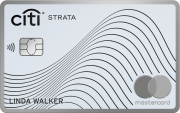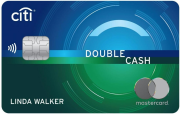The content on this page is accurate as of the posting date; however, some of the offers mentioned may have expired.

As of today, more customers looking for a credit card realize what points in the fine print and what features on the credit card they should pay their prime attention to. The major ignorance of credit card basics has been left behind and now people need to dig deeper into the countless nuances that sometimes puzzle or even ruin your credit if not approached with a smart.
Among the credit card nuances that customers find to be most vague are the interest rates, or APRs - the feature determining the overall cost of your credit card deal. Almost all potential applicants know that the higher their APR, the more they will pay back to the company. However, there are some nuances that need your consideration if you do not plan to overpay.
Understanding of a credit card's APR and its types is essential for a smart credit card use which consists of not only saving your money but gaining some additional funds in the form of rewards. We found out that a customer striving for saving and gaining on his/her plastic needs to know about the two functional types of the Annual Percentage Rate - a variable APR and fixed APR.
The type of the interest rate is determined by your credit card issuer and cannot be bargained, so your key task is to simply be aware of how much it may cost you and manage your account accordingly. Thus, you will make the most profit out of your credit card deal.
We are talking now about the so-called "go rates" (regular APR), leaving credit card baits (teaser or introductory rates) behind as they are always only temporary.
So, if you apply for a credit card with a variable interest rate, whether it is low or not, you should know that the rate will change together with the prime rate. The prime rate is the basic interest set by the Federal Reserve and charged by credit companies to their most valued customers.
Lately, the prime rate has been lowered due to the credit card crisis, and such cards may look really enticing to you. However, the catch is the rate is always wrapped with some percentage which brings the profit to the bank, so you end up paying more all the same.
What's worse, the Federal Reserve may boost the prime rate at any time setting no caps to the maximum amount the bank may charge it clients. So, make sure you do your darnedest to pay your balances in full each month.
You are much luckier when your credit card carries a fixed go APR, especially if it is low, which depends on your creditworthiness. You wouldn't deny you feel much safer when your card interest stays the same irrespective of the situation on the credit market and Federal Reserves' policy.
However, there is not such a credit card on offer yet that would generate only profits to a cardholder. So a fixed rate plastic has also left itself a loophole for a chance to earn revenues. If you carefully read the fine print, you will reveal the trap hidden among the numerous vague points of the agreement which means that the issuer reserves the right to change the credit card interest rate any time for any reason with a 30 day written notice before the change.
Actually, a fixed rate plastic gives you no real guarantee of keeping your interest from increasing but it does give you some additional incentive to apply thanks to its promise.
Due to the human's mentality, we are more likely than not to choose stability, even if it only seems to us.
If a fixed rate card seems more reliable to you, then go ahead. But do yourself a favor - look into the mailbox for the notice about the rate rising and get ready to loosen your purse strings.





